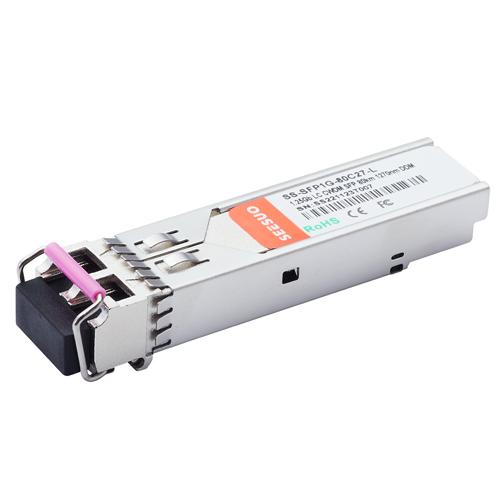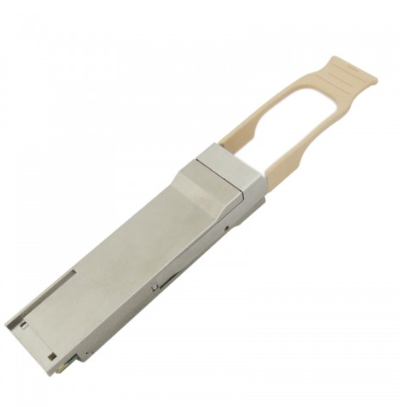- Related articles
- What is PCI Express 1.0 2.0 and 3.0?
- Optical Transceivers for Cisco WS-C2960+24TC-S Switch
- Optical Transceivers for Cisco N9K-C9396PX= Switch
- Optical Transceivers for Cisco SG300-28MP-K9-EU Switch
- Optical Transceivers for Cisco WS-C3560CX-8TC-S Switch
- All Cisco 15454-GBIC-SX's information (Specs, Datasheet PDF, Compatibility matrix)
- Introducing Cisco S-Class 10GBASE SFP+ Modules
- All Cisco DS-SFP-FC4G-LW's information (List price, Specs, Datasheet PDF, Compatibility ma
- Optical Transceivers for Cisco WS-C2960X-24TS-LL Switch
- Optical Transceivers for Cisco WS-C3560V2-48PS-SM Switch

Definition:
The small form-factor pluggable (SFP) is a compact, hot-pluggable transceiver used for both telecommunication and data communications applications. The form factor and electrical interface are specified by a multi-source agreement (MSA) under the auspices of the SFF Committee. It interfaces a network device motherboard (for a switch, router, media converter or similar device) to a fiber optic or copper networking cable. It is a popular industry format jointly developed and supported by many network component vendors. SFP transceivers are designed to support SONET, gigabit Ethernet, Fibre Channel, and other communications standards. Due to its smaller size, SFP obsolesces the formerly ubiquitous gigabit interface converter (GBIC); the SFP is sometimes referred to as a Mini-GBIC. In fact, no device with this name has ever been defined in the MSAs.
QSFP is short for quad (4-channel) small form-factor pluggable. It is a compact, hot-pluggable transceiver also used for data communications applications. QSFP+ evolved as the standard to support 10Gb/s data rates per SFF-8436. Compared with QSFP+, QSFP products support Quarter Small Form-factor Pluggable with the different data rate so that there is no change in the product solution. Nowadays, QSFP+ gradually replace QSFP and is widely used by people as it can provide higher bandwidth.
Difference between SFP and QSFP+
SFP
- Data rate: 155M/622M/1.25G/2.5G/4G
- Wavelength:850nm/1310nm/1550nm
- PIN/APD photodiode receiver
- SFP MSA package duplex LC,
- +3.3V single power supply
- With or without DDM function
- Very low EMI and excellent ESD protection
- Distance from SX 0.5km to ZX 120km
QSFP+
- QSFP+ MSA, SFF-8436 compatible
- Four independently addressable transmit and receive channels
- Highly compact: savings of 60% on edge and board usage compared to four comparable SFP+ modules
- Electrically hot-pluggable
- XFP-like latch mechanism for ease-of-insertion
- Digital Diagnostics Monitoring Interface. allows customer management and monitoring of key modules parameters, analogous to SFP+
- Optical connectivity via industry standard MPO/MTP terminated fiber ribbon
Difference between SFP and SFP+:
SFP transceivers are expected to perform at data speeds of up to five gigabits per second (5 Gbps), and possibly higher. Because SFP modules can be easily interchanged, electro-optical or fiber optic networks can be upgraded and maintained more conveniently than has been the case with traditional soldered-in modules. Rather than replacing an entire circuit board containing several soldered-in modules, a single module can be removed and replaced for repair or upgrading. This can result in a substantial cost savings, both in maintenance and in upgrading efforts.
The enhanced small form-factor pluggable (SFP+) is an enhanced version of the SFP that supports data rates up to 16 Gbit/s. The SFP+ specification was first published on May 9, 2006, and version 4.1 published on July 6, 2009. SFP+ supports 8 Gbit/s Fibre Channel, 10 Gigabit Ethernet and Optical Transport Network standard OTU2. It is a popular industry format supported by many network component vendors. Although the SFP+ standard does not include mention of 16G Fibre Channel it can be used at this speed.
Conclusion:
Small form-factor pluggable (SFP) is a specification for a new generation of optical modular transceivers. The devices are designed for use with small form factor (SFF) connectors, and offer high speed and physical compactness. They are hot-swappable. Several companies have formed a consortium supporting the use of SFP transceivers to meet their common objectives of broad bandwidth, small physical size and mass, and ease of removal and replacement. QSFP+ is an evolution of QSFP to support four 10 Gbit/sec channels carrying 10 Gigabit Ethernet, 10GFC FiberChannel, or QDR InfiniBand. The 4 channels can also be combined into a single 40 Gigabit Ethernet link.























































